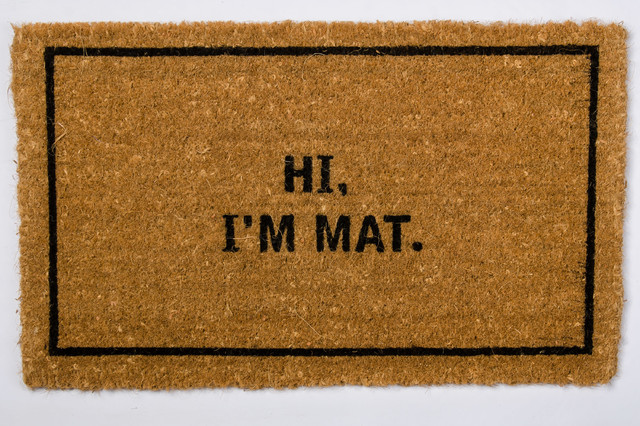This has been a rough week for losing interesting figures in the
entertainment industry. But for as much
attention which is (rightfully) being paid to legendary satirist Stan Freberg, to
character actor and Clint Eastwood’s comic foil Geoffrey Lewis, and even to James Best,
who played the lovably inept Sheriff Rosco P. Coltrane on The Dukes of Hazzard,
two forces in television music also died this week that you might not have
heard about. Neither of them were very
well known, but just by longevity alone (both lived way into their nineties),
they each left a mark on entertainment in very unusual ways.
Milton DeLugg is probably best known as the bandleader for
the Chuck Barris free-for-all known as The
Gong Show. Barris called the band
“Milton DeLugg and his Band with a Thug”, a play on the name of Bob Hope’s better-known
house band, “Les Brown and his Band of Renown.”
DeLugg contributed more to the craziness than just his music; he
occasionally offered corny jokes in character as “Naso Literatus” (actually the
Latin name of a tropical fish!).
 |
| With Abe Burrows |
A 19-year-old DeLugg played his accordion in the 1937 short
film Trailing Along. He continued to
appear in shorts and the occasional feature until the early fifties, when his
attention moved to television. He was
the musical director for Broadway Open House,
an NBC late-night program considered by many to be the progenitor of The Tonight Show. (Many years later, he led the Tonight Show band
in Johnny Carson’s early years for a brief interim period between Skitch
Henderson and Doc Severinsen.) During the fifties, he served as bandleader for
variety shows starring such diverse personalities as ventriloquist Paul
Winchell, playwright Abe Burrows and even game show host Bill Cullen. Through his association with Abe Burrows and Frank Loesser (his co-writer on "Hoop-Dee-Doo"), DeLugg was informally involved in the development of their classic musical Guys and Dolls.
As a composer, DeLugg contributed many “Really, that was
him?” trivia moments to popular culture.
- “Horray for Santa Claus”, his theme song to the notorious 1964 cheapie Santa Claus Conquers the Martians, has become a novelty favorite. Al Hirt even recorded a respected cover of the silly ditty.
- His “Orange Colored Sky” (perhaps better-known for the lyrics “Flash! Bam! Alakazam!”) was a 1950 hit for Nat King Cole, and has since been recorded by everyone from Doris Day to Lady Gaga.
- His instrumental “Rollercoaster” was used as the closing theme music to the long-running panel show What’s My Line?
- “Hoop-Dee-Doo”, a fun polka number all about how much fun polka numbers are, was a top-20 hit for three different artists (Perry Como, Kay Starr and Doris Day) in the same year. DeLugg eventually used it as the winner’s theme on The Gong Show. Until a recent redesign, The Hoop-Dee-Doo Musical Revue, a dinner show at the Fort Wilderness Resort in Disney World, used his song as its theme.
For decades, DeLugg also served as musical director for the
annual Macy’s Thanksgiving Day Parade.
He served in that capacity for the final time in 2013 at the age of
94. He died Tuesday at the age of 96.
For MUCH more detail about DeLugg's long career, here's a transcript of a lengthy and detailed 2011 interview:
Ray Charles is certainly a much more famous name, but the
guy who died this week wasn’t THAT Ray Charles.
The legendary blind soul singer died more than a decade ago. THIS Ray Charles was a musical arranger and
conductor perhaps best known as the leader of The Ray Charles Singers, a group known
for their long association with Perry Como.
If you’re old enough, and if your tastes veered toward the easiest of
easy listening, you might remember their hit recording of “Love Me With All
Your Heart”.
The Ray Charles Singers recorded dozens of albums your
parents bought, and which you can now easily find in the dusty back bins of
thrift stores, but Charles himself provided a specific and invaluable skill in
the early years of television variety shows.
Broadly described as “special material”, Charles had the ability to create
new pieces or adapt old ones to the styles of any given guest performer, a
useful skill that allowed him to work with most of the great entertainers of
the 20th century, including the famous Ray Charles. He once said of his abilities, "My forte
is material written for a special situation. I'm a one performance-only
man!"
He took his musical arrangement skills to a variety of
variety shows in later years, including The
Glen Campbell Goodtime Hour (where he had the famous Ray Charles perform “America
the Beautiful”) the ersatz-50s group Sha Na Na, The Muppet Show, and annual spectaculars such as The Kennedy Center Honors and A Capital Fourth. As his name appeared with increasing regularity
in credit rolls, he began billing himself as “the other Ray Charles”
As with DeLugg, Ray Charles’ career has some amusing trivia
footnotes. He provided the male voice to
the duet that sang the Three’s Company theme song ("Come and knock on our door."). And if you remember the names of the states in
alphabetical order because you memorized the song “Fifty Nifty United States”
in grade school, you have Ray Charles to thank for that.
Coincidentally, Ray Charles and Milton DeLugg not only died
on the same date, both were 96.












































